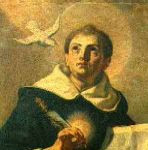On the Road to Emmaus and the Liturgy
In another conversation with Pr. Lehmann, we discussed the Road to Emmaus pericope. I want to just touch briefly on a few of the things he and I discussed.
In the case of the Road to Emmaus pericope, it seems obvious to me that we have a very plain Eucharistic exegesis by Luke. Luke of all the Evangelists is concerned with the Liturgy. After all, he is the one who lets us catch a glimpse of it in Acts 20:7-12 (I believe I am right in that I remember Chrysostom pointing this out). In both the Road to Emmaus and this shorter pericope (where Paul raises Eutychus from death) we see that the liturgy of the earliest Church followed a similar pattern as today. The first part, where the pair converse with Jesus and He quotes to them the Scripture closely mirrors the Liturgy of the Word, what used to be called the Mass of the Catechumens, because the uninitiated had to leave after the proclamation of the Word and the preaching. In the same way, the two on the road with Christ are similarly unenlightened. It isn't until the next phase, with the very important aspect of Christ breaking the bread and sharing it with His own hands that they see. He disappears from their midst, from their senses shall we say, but the lasting effect of this koinonia experience with Christ remains in their hearts.
The next pericope we discussed immediately follows this. It is Luke's recounting of Christ's appearance to the Apostles in the Upper Room. Here, and I think Pr. Lehmann agrees with me, Christ's eating does not have as much to do with "table fellowship" and the like. The symbolism is all wrong. Christ takes from the apostles and eats. There is a practical reason here; Christ seeks to demonstrate that He is not a ghost, and so eats regular food.
Having said that, I remember my Tertullian when I say that it is not insignificant that the apostles give him fish to eat ...

No comments:
Post a Comment